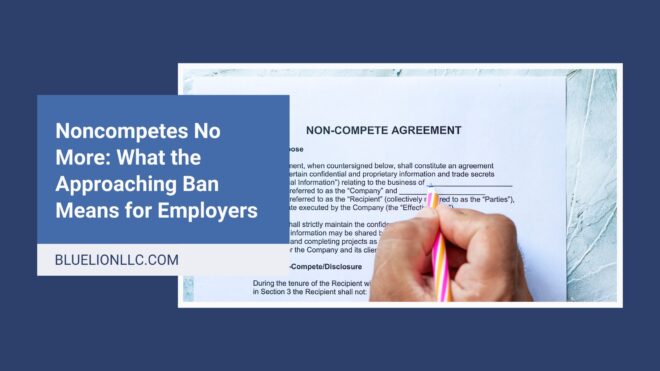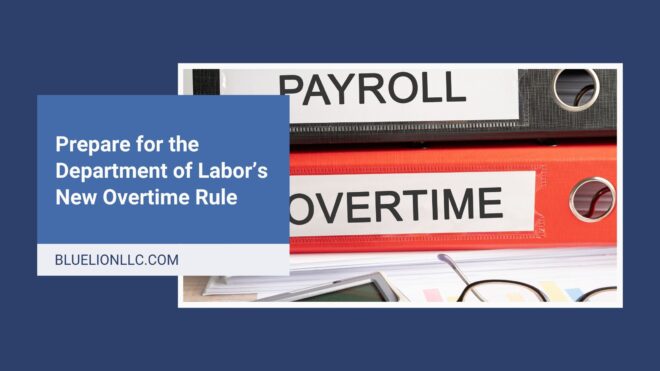
Performance review.
Performance appraisal.
Employee evaluation.
No matter what you call it, the thought of managing employee performance reviews is often daunting to both managers and employees. Often considered the yearly “report cards,” performance reviews are viewed by many as a time-consuming and unpleasant experience.
Despite its negative implications, the employee performance review is in no way going out of style. It remains a vital element in any successful organization’s human resources priorities. With a solid review structure in place, this process doesn’t have to be such a nuisance. That’s why we’ve compiled this guide for employers to understand:
- Why performance reviews are important
- How to do performance reviews
- Tips for successful performance reviews
So stick with us to learn how to create a more positive and effective employee evaluation process, now updated for 2023! We’re covering:
- Why performance reviews are important
- How to do performance reviews
- 9 common performance review methods
- What NOT to do during reviews
- 9 bonus tips to make them successful
Click any of the above to jump to a certain section, or keep scrolling for the comprehensive guide!
Why are Performance Reviews Important?
Employees and managers can learn and grow from performance appraisals. They play an important role in:
Clarifying Individual Roles and Organizational Goals
Employee evaluations are an opportunity to check in with employees and ensure they understand the company’s big vision and goals and the impact they have on the organization. Reviews are also the perfect time to clarify an employee’s role and duties and answer any questions.
Confusion leads to frustration and decreased productivity. Regular evaluations are an important step in boosting productivity and performance and ensuring each employee owns their responsibilities.
Providing Regular Feedback
Your company strives to hire, develop, and keep the best employees. Those employees care about their reviews—which means you should too.
In fact, Officevibe reports that 43% of highly engaged employees receive feedback at least once a week, compared to only 18% of employees with low engagement. These numbers show that regular, constructive feedback from supervisors makes a difference.
Use employee performance reviews to help employees clearly understand their strengths and areas of improvement and encourage them to take initiative and find satisfaction in their work.
Managers should also be documenting performance reviews, which can support not only employee development but also potential employment discrimination or wrongful termination lawsuits.
Career Development
A large part of performance reviews is assessing how the employee has performed against their goals and setting new objectives. Managers can then determine new opportunities for training and mentoring or areas in which the employee could use additional guidance.
Additionally, the evaluation can provide insight into developing future succession plans for team members in specific roles. Or, if an employee is struggling, the appraisal will provide data and feedback necessary to develop a performance improvement plan (PIP) if appropriate.
Employee Rewards and Appreciation
A solid performance management system helps employers stay on top of employee rewards, such as time off, bonuses, and other forms of recognition. Team members who receive rewards will, of course, remain motivated to keep up the excellent work. And seeing their peers’ achievements will incentivize others to step up their game and reap the rewards!
How to Do Performance Reviews
Now that you understand why they’re so important, you may be wondering exactly how to do performance reviews.
Define Company Goals
Start by defining your company’s goals. These may include any or all of the following:
- Profit goals: Aim to increase profits by a specific percentage for a set time period.
- Service goals: Aim to improve customer satisfaction and retention.
- Social goals: Include philanthropic initiatives to constantly give back to the community through donations or volunteering.
- Growth goals: Focus on expanding the company by hiring new employees, opening new locations, etc.
Understanding your corporate goals will help you hire the right people for the right roles, and then effectively develop those employees to reach those goals.
Determine Performance Review Frequency
You will also need to set the performance review frequency. A few questions to ask to determine what schedule will work best for your organization are:
- How often will compensation be discussed?
- How long does it take managers to fill out evaluations?
- What tools would make it easier/quicker for managers to complete reviews?
- How long does it take employees to demonstrate growth/change?
That said, your company could choose to conduct employee performance reviews:
Weekly or Biweekly
You might opt for brief evaluations every week or every other week, especially for employees who:
- Have weekly KPIs or goals to hit
- Perform best with specific, short-term goals
- Are working on projects with tight deadlines or lots of moving parts
These frequent check-ins don’t have to dive deep into every aspect of the employee’s performance. They’re more of an effective way to document progress and provide regular opportunities for managers and team members to check in with one another.
Monthly
Monthly performance reviews are ideal for:
- Contract workers or freelancers
- New hires undergoing the onboarding process
- Significant long-term projects with specific milestones
Plus, many employees prefer monthly appraisals over annual reviews so they can gain more specific insights and guidance on their performance, what they are doing well, and areas they need to improve.
Quarterly
Like many companies, you probably set quarterly goals and budgets. As such, you might align employee evaluations and goals with the overall quarterly business goals. Three months is often an ideal time for employees to achieve their goals and make notable progress in certain skills or other areas.
Annually
Annual performance reviews are becoming a thing of the past as employers focus on company culture and employee development. If you do opt for annual reviews, don’t rely on them alone—no employee should go an entire year without specific feedback. Plus, a single yearly appraisal can lead to information overload, vague direction, and an unfair view of an employee’s work that only looks at past performance.
For employers who hold quarterly or annual appraisals, we recommend that managers have regular check-ins (think weekly or monthly) with their team members. Supervisors can then use those weekly, biweekly, or monthly evaluations in the quarterly or annual reviews for a comprehensive look at the employee’s progress and performance.
In a TriNet survey of Millennial workforce members, 85% said they’d feel more confident if they could have frequent conversations with their managers. So keep the lines of communication open and provide employees with consistent feedback and guidance.
Train and Prepare Managers
One of the most common pitfalls when it comes to employee appraisals is ill-equipped managers. Ensure managers in your organization are trained on how to deliver effective reviews. This means educating them on best practices, such as what to document, what to say, and how to communicate it. It’s important to revisit training in this area and reinforce these practices on a regular basis.
Another area where managers often fall short is preparing and planning for employee performance reviews. In companies with a weak or nonexistent performance review system and training, managers often perceive reviews as a necessary inconvenience. Many simply spring reviews on employees with little to no advanced notice, then rush through the form to comply with HR requirements.
This means they don’t take the time to provide meaningful feedback to their employees and evaluate their progress. These managers also may not track performance, acknowledge accomplishments, or address poor performance throughout the year. Without this vital information, they cannot be prepared to give accurate and effective employee performance reviews.
Put a Performance Review Process in Place
Many of the problems noted above can be resolved with a strong performance management process. When you have an accurate way to measure employee performance, a clear process, and methods that make it easy for both parties, everyone will be more willing and motivated to do things properly.
A solid employee performance review process includes:
- Continuous and timely feedback throughout the review period to ensure employees understand how they are doing and their expectations.
- Consistent communication that includes performance feedback measured against clear and specific goals and expectations established at the start of the performance management period.
- A process for acknowledging the results of the performance review process that is documented between the manager and the employee.
- A one-on-one conversation between the manager and the employee (ideally face-to-face) at least once a year.
9 Common Employee Performance Review Methods
There are several types of review systems that can be used either individually or in combination with one another. Whatever method(s) your business decides to use, both managers and employees should be given a clear definition of each level of performance.
Below are the five most common review styles.
Self-evaluation
This method requires an employee to judge their own performance against predetermined criteria.
Pros: The self-evaluation is typically considered by the manager during the official review to encourage a more thorough discussion. Differences in the employee and manager’s evaluations can be insightful.
Cons: This style may be too subjective to accurately reflect work performance since many employees often rank themselves too high or too low.
Behavioral Checklist
This one is pretty straightforward: It’s a checklist of behaviors an employer expects of an employee to succeed. In this case, an employer responds to a list of yes or no questions. The checklist may be weighted, meaning each question may carry a predetermined value.
Pros: Behaviors differ based on job type, so this technique is easy to adjust for each position. When done correctly, it produces clear results and allows easy comparison between all employees
Cons: This one can get a little tricky since the questions must be worded and weighted carefully to avoid confusing results. Plus, the checklist doesn’t include explanations or detailed answers—so you’ll want to include comments with more specific feedback.
360-degree Feedback
The 360-degree feedback review involves pulling feedback from the employee’s subordinates/direct reports, manager, non-direct supervisors, peers, and potentially even customers. The manager then completes an assessment of the employee’s work performance and technical skillset, while taking the outside sources into consideration.
Pros: As the name implies, this style provides a well-rounded look at an employee’s performance. It can even include an evaluation of the employee’s character and leadership skills. The broad feedback also helps cancel the influence of bias or outlying data points.
Cons: This method can be a bit more time-consuming since it requires obtaining the employee’s complete profile and feedback from multiple sources; however, the benefits of this comprehensive assessment are well worth the effort.
Management by Objectives (MBO)
The management by objectives (MBO) appraisal method, simply put, involves both the manager and employee setting and meeting goals. The employee either hits those goals by the set deadline(s), or they don’t.
Pros: Since the employee is included in the goal-setting process, there is an agreement that the goals are obtainable. It is also easy to define success and failure with this method.
Cons: The MBO style disregards non-goal-related success metrics, so some other important factors may not be taken into consideration come review time.
Project-based Appraisal
This type of employee performance review is used to evaluate an employee’s performance after completing every project. Questions and discussion points will focus on the individual’s most recent work.
Pros: Project-based appraisals are efficient and results-oriented. They provide team members with specific feedback and action items that they can improve upon/prepare for ahead of the next project. Many employees might like this short feedback cycle.
Cons: Since managers would need to conduct a project-based evaluation after every project, this could be somewhat time-consuming. But with a solid system in place, they can run very smoothly.
Competency Assessment
Competency assessments compare an employee’s current skills to their target level. This helps managers identify strengths and areas where the employee needs improvement. This type of evaluation can be conducted via observation, interviews, or forms.
Pros: Competency assessments help organizations:
- Get a high-level view of the skill gaps in their workforce and use that data to set bigger business goals and strategies.
- Develop specific training and mentoring programs to help employees learn and grow.
- Identify gaps and recruit new talent with the skills to fill them.
Cons: You must choose the right competencies for each role in your business to conduct a fair competency assessment. You’ll also need a system to ensure accurate scaling, privacy, and capability analytics. And to see actual results, you’ll need to put action plans in place for each employee.
Rating Scale
Also known as a grading system, this performance review method is probably the most commonly used. It’s based on a set of employer-developed criteria that can include behavior, traits, competencies, or completed projects. Employees are usually judged on a scale of 1 to 5 or 1 to 10.
Pros: This method is simple and provides easy functionality—as long as both managers and employees are on the same page about how the scale works (i.e., what each point on the scale means, or if the ratings categories focus on traits vs. behaviors).
Cons: If managers and employees have a different understanding of the scale, there could be unrealistic expectations and discrepancies. For example, some employees may consider a 3 out of 5 to be average, but you may consider it to be above satisfactory.
Depending on your organization and the types of employees you have, you may use one of these methods above or a combination of them.
For those who use any numerical method, one way to make things easier for everyone is to create a rubric for scoring. This helps by:
- Holding everyone to the same standards.
- Enabling managers to score more accurately.
- Showing employees what they need to do to improve their score.
- Allowing the employee to feel good with a “meets expectations” score.
Behaviorally Anchored Rating Scales (BARS)
Similar to the traditional rating scale, a behaviorally anchored rating scale (BARS) also typically uses a scale of 1 to 5. The difference is that this method uses behavior statements to measure a staff member’s performance based on how they handle specific situations.
Pros: BARS is an effective way to clarify for both managers and employees the job expectations and what the employee needs to do to improve with a balance of qualitative and quantitative data. It is ideal for companies that:
- Have many employees in the same or similar roles
- Need to eliminate rating errors or bias in their current performance management process
Cons: This type of employee evaluation can be time-consuming, particularly for large companies. It requires time and effort from leaders to develop the scale for each role and conduct an appraisal for each team member.
Human Resource Accounting
Human resource accounting, also known as cost accounting, essentially evaluates the return on investment (ROI) of an employee. It measures the financial impact they offer against the cost of retaining them.
Pros: Human resource accounting is ideal for roles in which employee contributions and costs are measurable. For example, sales reps can be assessed by the revenue they generate, and upper management can be reviewed based on their profit and loss.
Cons: There will always be some gray area when it comes to the costs and benefits an employee brings to your business, for some positions more than others. This method can also lead to negativity, discouragement, and even jealousy among employees after learning their values.
What NOT to Do: Common Rating Errors
Because employee performance reviews are conducted by humans for humans, there is plenty of room for error. This is why it’s so important to have a clear, solid system in place along with a rubric.
Below are five of the most common performance rating errors and how you can avoid them.
- Lack of Differentiation: Supervisors often lack the confidence to defend their ratings or be reluctant to pass judgment, so they rate everyone about the same. This can lead to leniency (everyone gets high ratings), severity (everyone gets low ratings), or a universal feeling that everyone is doing just fine (so everyone is rated in the middle). Poor training or the failure of an organization to clarify that performance reviews are a critical part of the managerial role are often to blame here.
- Recency Effect: With no review process and system in place, many managers do not continuously measure performance, provide feedback, or document results. When it comes time to review, they are unable to remember the earlier part of the performance period and weigh the most recent events too heavily.
- Halo/Horns Effect: These occur when an employee either performs very highly or very poorly in an area, respectively, and the manager rates the employee correspondingly high or low in all areas.
- Personal Bias/Favoritism: It’s no secret that some managers are influenced by their impressions of or personal feelings about employees, thus affecting their employee evaluations.
- Inaccurate Information/Preparation: Managers sometimes fail to take the time to discuss an employee’s performance with those who work closely with the employee, leading to an inaccurate assessment.
Remember that the employee assessment should be a thoughtful process. Don’t rush through it—instead, sit down and discuss the employee’s performance and how they have helped the company. Consider how you can reengage them in the company for the next year (or your chosen review period).
It’s About What You Say…
Documenting the performance with context, details, and examples will help the employee understand where they stand and the reasoning behind your review.
Positive Review Example
You give your employee, Joe, a score of 4 out of 5 for Customer Service, meaning he is exceeding company expectations.
Instead of writing: Joe has been exceeding expectations. He is a great customer service representative.
Try: Joe has exceeded company expectations this year for customer satisfaction. He has the highest ratings from customer surveys, scoring a satisfaction rate of 96%. Several customers have written to the company to provide accolades for his support and service. Additionally, as his manager, I have received calls from customers telling me what a pleasure it has been working with Joe, and how he takes his time to make sure the customer has what they need.
Negative Review Example
Positive reviews are easy to give…but unfortunately, it’s not always great news. You should still provide detail and examples to help the employee understand where they stand and how they can improve.
You might score Kate a 2 out of 5 for Customer Service, meaning she’s not meeting company expectations.
Instead of writing: Kate needs to work on her customer service skills. She has had some issues which have caused the company concern and has had several customer issues arise.
Try: Kate has had several customer service complaints this past year (which are documented in her file). The concern is she is working too quickly to get the customer off the phone, so she is not listening to their needs, or assisting them with their questions in a respectful manner. She has also given several customers wrong information, and there was an incident 6 months ago where she hung up on an angry employee. We would like to see Kate work on her patience and provide great customer service. Her current satisfaction rating is 60%. We need to see this rise to a minimum of 80% in the next 3 months.
Even if you have significant critical feedback, be sure to provide some positive feedback in the review!
…And How You Say It
When managers give reviews, nothing should surprise the employees. This is why regular check-ins with employees are so important!
Don’t simply read what you wrote on the employee’s review. Discuss each topic at a high level unless a certain score was below or above average. Take this time as an opportunity to have a discussion and expand on your feedback in areas of note.
Ensure it’s a two-way conversation by asking questions and getting feedback from the employee on their position, the team, YOUR management, and the company. Some questions you may ask are:
- What do you expect to be the most challenging about your goals for this quarter?
- What support can the department provide for you that will help you reach these goals?
- What are your hopes for your achievements at our company this year?
- How can I be a better manager for you?
- How often would you like to receive feedback?
- What kind of schedule can we set up so that you don’t feel micromanaged, but I receive the feedback that I need as to your progress on your goals?
- What would be a helpful agenda for our weekly one-on-one meetings?
And perhaps most importantly, remember to listen, wait, and THEN respond!
Setting Employee Goals
With each review, managers and employees should collaborate to create new short- and long-term goals. These may include job description goals, project goals, behavioral goals, and stretch goals (especially challenging goals typically used to expand knowledge, skills, and abilities).
Always make sure the goals set are both flexible and SMART:
- Specific, clear, and understandable
- Measurable, verifiable, and results-oriented
- Attainable, yet sufficiently challenging
- Relevant to the mission of the department or organization
- Time-bound with a schedule and specific milestones
Document the goals, make them available for review, and manage them on a continuous basis.
Finally, schedule a follow-up after each performance appraisal (before the next official review) depending on the frequency.
Managing Raises and Reviews
Tying in raises with employee performance reviews has been a common practice for a long time. But the compensation aspect can quickly consume the review process, distracting from the real importance and intent of the review. Employees instead want to know simply whether or not they’re getting a raise.
Performance reviews are meant to help employees improve over time which, in turn, helps the company grow and fosters a healthy workplace culture. Traditionally, managers tell employees what they have been doing well and what they could do to level up their performance.
When you separate pay raises from employee evaluations, it puts the focus back on the review process. You can then ensure your employees are developing new skills and becoming better, more fulfilled workers. This is the key to building a stronger, more effective organization.
9 Bonus Tips for Conducting Successful Performance Reviews
Here are our pro tips to prepare both managers and employees for smooth and effective reviews every time:
- Keep a “notepad” for each employee who reports to you. Use these to write down wins and areas of improvement.
- Send emails to celebrate successes and promote further behavior.
- Address any issues in person, then follow up with an email.
- Provide a blank review and the rubric upon hire or within the new employee’s orientation period.
- Provide the review AHEAD of time (no more than a day, no less than an hour).
- Do not sugarcoat poor performance.
- Do not downplay high performance.
- Control the discussion if there are negatives the employee does not want to accept.
- After completing the review, look at last year’s (if applicable).
By keeping things as clear, simple, and consistent as possible, you can create a better review experience for everyone in your company.
Employee Performance Review Consulting
If you take away one lesson from this guide, we hope it’s that employee evaluations are NOT busy work! They are an essential part of fostering employee growth and running a successful business.
We understand, however, that establishing or improving an appraisal process is not an easy or fast undertaking, which is why BlueLion is here to help. Whether you need to create a new employee performance review process for your budding business, or you need assistance reviewing your existing system, learn more about our outsourced HR services or contact us today at 603-818-4131 or info@bluelionllc.com.
The information on this website, including its newsletters, is not, nor is it intended to be legal advice. You should contact an attorney or HR specialist for advice on your individual situation.
This article was originally published in July 2020 and has been updated for comprehensiveness.












